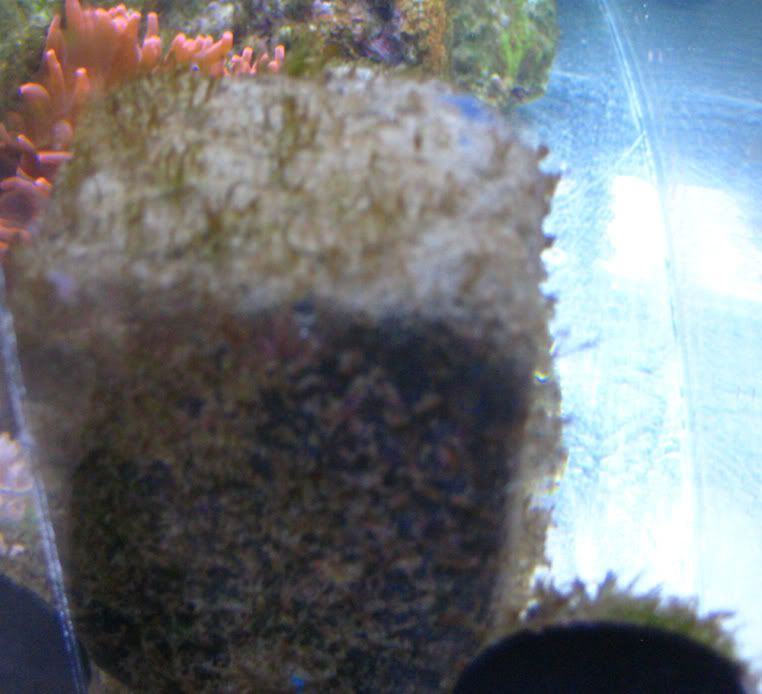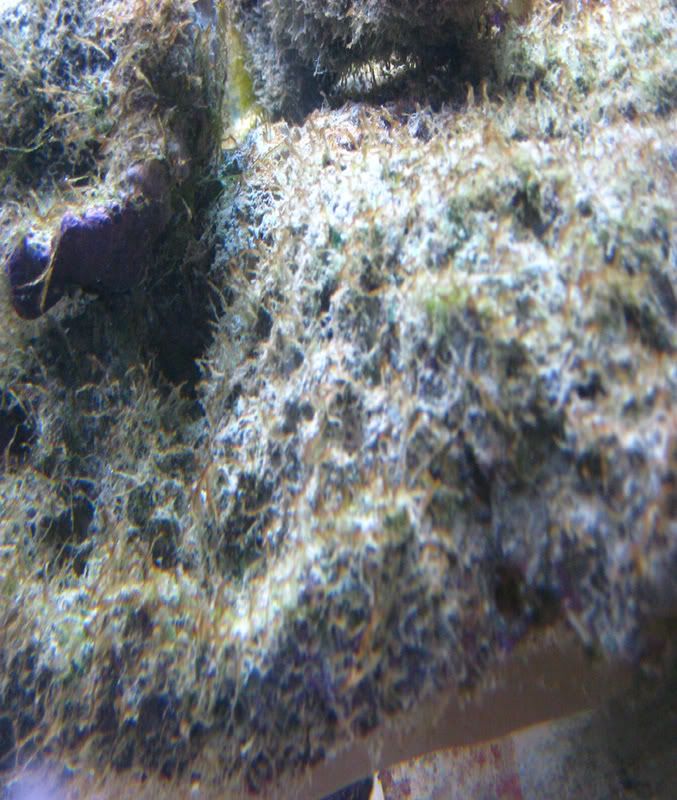Hi, hopefully this guide will help you get rid of your dinoflagellates issues. I´ve been fighting dinoflagellates for more than 2 years and finally I got rid of them. It´s been that long because at the beggining I thought they were hair algae. They can´t be treated like normal algae.
The first thing you need is a positive ID. Let me show you some pictures of how they look like:




They basically look like brown hair algae but with lots of bubbles, plus they grow extremely quick and are very invasive, even if you scrap them off or use cleanup crew, they can cover a rock in a day.
Here´s my tank before the problem:

Here´s when the problem began, it quickly covered the tank:

Why did it began?, the water quality was perfect and they probably came with a rock or coral. Perfect water quality can trigger their growth, this will be discussed later on.
During 2 years I tried every method to get rid of the, weekly water changes, phos reactor, carbon, sump with macros. Nothing worked.
The weirdest thing was that water quality always showed 0 nitrates and 0 phosphates, either from the RO unit or the tank, and I used different test to measure it.
I was told the dinoflagellates were consuming every nutrient before it could be read, and so that´s why I kept with the water changes, etc. This proved to be false at the end.
There´s an article at reefkeeping about how to get rid of dinos by increasing ph and using lots of rowa phos in your reactor:
http://www.reefkeeping.com/issues/2006-11/rhf/index.php
I raised my ph to 8.5-8.7 for several weeks as well as using the phos reactor, it did nothing to them.
Why is that?, according to the article, there could be many species of dinoflagellates, some of them like the one in the article are toxic, you can start losing snails that eat them. Apparently this is the species that die with high ph, my species of dinos turned out to be non toxic and not affected by high ph.
So what did I do?, I started adding lots of sea hares, 6 of them, they reduced the dino concentration but reached a poing where they could not reduce it any longer, the dino popullation was steady, the sea hares would clean a rock and next day the rock had new dinoflagellates growing on it.


As suggested by other RC members I removed the sandbed, this eliminated 50% of the problem, but the rest could not be reduced any more.
So another RC member suggested a weird aproach: Increasing the nitrates!, and he told me to read this article which has a very scientific aproach:
http://rds.yahoo.com/_ylt=A0oGkwx8se...382/382-57.pdf
To make it short, the article explains that dinoflagellates posses bacteria inside of them, wheather beneficial or parasitic bacteria I don´t know and I don´t care, but the important thing is that that bacteria can help eliminate them.
According to the article, when nitrate is present in low concentrations, the bacteria inside the dinos start to multiply to a point where it makes the dinoflagellate explode and so it kills it.
Something totally different from what we are used to hear about water quality in the reef, anyways I had nothing to lose so I didn´t do water changes for 2 months.
After 2 months the nitrate was 2 ppm and the dinoflagellates were starting to dissapear, incredible isn´t it?, everything was almost gone all by itself and the sea hares were helping get rid of it, this time the dinos were not comming back.
There was to much sea hare excrement on the bottom, you must constantly syphon it through the filter sock, and then clean the filter sock in order to not do the water changes.


I thought the problem was over so I decided to do a water change. Inmediately the dinoflagellates came back the next day, a reading showed that nitrates were 0 again. Phosphates have always read 0 so they don´t seem to play a very important part, anyways its a good idea to keep them at 0, but do not keep nitrates at 0 while having dinoflagellates.
With time nitrates started to be present again until dinos almost dissapeared.
Try to keep nitrates within 2 to 3 ppm, this range is perfectly safe for fish and corals, levels higher than 3 ppm will feed other algae and corals will start losing coloration.
So if nitrates reach more than 3 ppm do a small water change, small enough to reduce them to less than 3 ppm but no less than 2 ppm or else dinos will come back.
Keep this levels for several months just to make sure they don´t come back. After that you can do a large water change to reduce nitrates to 0 and probably the dinos will be gone forever.
I´m not the only one who has tried this aproach, some friends have also done the same and it has totally worked. If you want you can try the ph method before, if that doesn´t work then try the nitrate method and if it is not working, get rid of the sandbed while still treating with the nitrates method, you will start seeing the dinos dissapear when the nitrates start showing on the test.
Sea hares help get rid of the problem quicker, but don´t forget to filter their excrement through the sock.